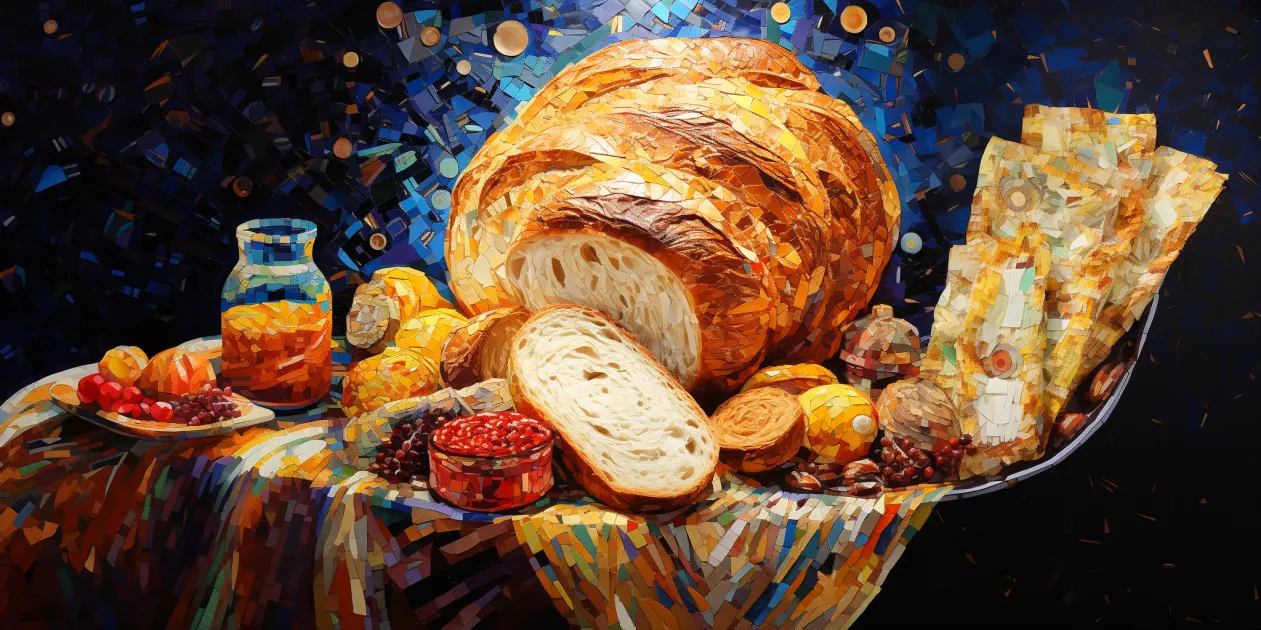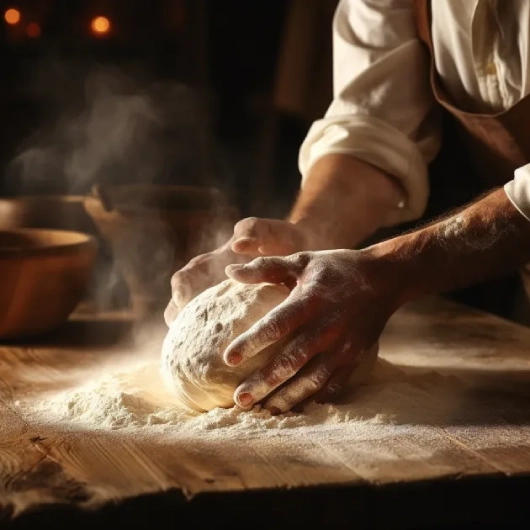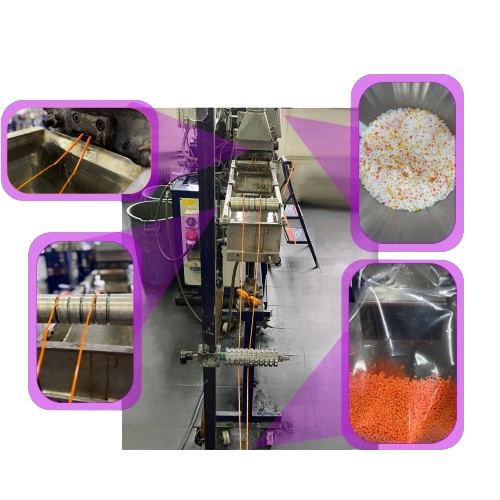
Plastics extrusion: how it works
It may sound strange, but explaining how plastics extrusion occurs is possible through images... culinary! How? Has anyone ever followed a recipe that involves kneading water and flour? Perhaps, to share a pizza with friends; to celebrate a birthday with a cake; to bake fragrant Christmas cookies. All these foods have one thing in common: the mixing of ingredients of different natures. If you have landed between the lines of our articles for the first time, we invite you to first read the previous episodes that explains what are masterbatches. For those who already follow us (and for the rebels who don't want to play by the rules), put on your aprons and get ready to get your hands dirty with flour and pigments.
The art of handmade dough
Kneading by hand is an art that holds a meaning of love. It is giving energy and effort for those with whom we will share the meal. A gift that has a purpose: in general, the longer the mixture is kneaded, the better the quality of the bread will be. Kneading by hand is useful because, through the heat of the friction, the gluten can be released from the mixture. When you knead for less than ten minutes, the temperature of the hands is not sufficient to warm the dough. It is a long process. Letting the gluten out serves to incorporate the air that will make the bread soft, by forming bubbles inside the mixture. Without this air, the result will be hard and difficult to chew. The same principle applies to plastics extrusion in mechanical dispersion.

Plastics extrusion: how is it done?
Each polymer, i.e., every type of plastic, needs to be brought to the right temperature in order to reach a viscosity that allows it to be processed. In general, in order to heat it, it needs to be "kneaded" mechanically, through a friction, or rubbing movement. In physics, in technical language, this is called /shear rate/, or shear stress. The continuous rubbing produces a deformation and an increase in temperature that causes the plastic to change state from solid granules to a viscous mass. The process occurs in special machinery, called extruders, in which one or more screws, rotating, push the plastic against the walls of the machinery itself. This stress results in a temperature rise of the material, which "melts." Then, the movement of the screws transports it out. While exiting, the plastic obtains the desired shape that depends on the shape of the extruder nozzle. The last stage of plastics extrusion is cooling in water or air.
To each polymer its own extrusion
The masterbatch can have polymer bases of various types, so each formulation needs a dedicated extrusion. This is because each composition has a different viscosity. It is like comparing the dough of an ordinary bread composed of water and flour, with an Indian bread made of flour and yogurt: both require a specific amalgam process but are conceptually similar. Similarly, plastics extrusion has generally similar processes but may include some variations. You must be familiar with all the ingredients in the recipe in order to process them properly. This is because the masterbatch granule is similar to a ship containing pigments and additives ready to be released. The rubbing process we have described, which is called mechanical dispersion, allows the various types of capsule to open and release their contents.

Why do plastics extrusion with mechanical dispersion?
Now, as much in the art of kneading as in the plastics extrusion, no lumps should form in the mixture. In bread, the agglomerates are mostly packed flour; while in masterbatches they are pigment crystals stuck together and encapsulated in the molten plastic. Well-executed mechanical dispersion consists in breaking up these clusters and passing molten plastic between the fractures, during the fragment separation stage. In this way, they are "wetted" to prevent them from sticking together again. It is like adding water to a lump of flour to dissolve it. This is why mechanical extrusion is so important: since the coloring strength of a product is determined by its ability to cover a surface available to light, if there are lumps there is less availability, because clusters prevent homogeneous pigment dispersion. After all, even a lumpy loaf of bread cannot be tasty.
What are masterbatches, plastics, and other questions
Still having doubts? Write to us, we are here to answer your curiosities!